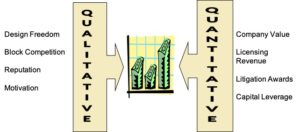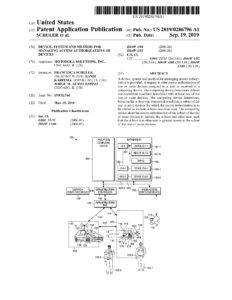 Everywhere we look we hear of the devastating impact of COVID-19 on health, businesses, social lives, and personal grooming.
Everywhere we look we hear of the devastating impact of COVID-19 on health, businesses, social lives, and personal grooming.
On the other side of this devastation is a significant increase in creativity and innovation designed to fight COVID-19. A glimmer of hope in an otherwise stormy landscape.
 As reported by the Word Economic Forum: “From Spiderman-esque wrist-mounted disinfectant sprays, to a wristband that buzzes whenever you’re about to touch your face, a wealth of new prototypes are demonstrating what human ingenuity is capable of in the face of adversity.”
As reported by the Word Economic Forum: “From Spiderman-esque wrist-mounted disinfectant sprays, to a wristband that buzzes whenever you’re about to touch your face, a wealth of new prototypes are demonstrating what human ingenuity is capable of in the face of adversity.”
Psychologically Today agrees. In a recent article, it highlighted examples of the flurry of quick-reaction innovations that can help cope with the epidemic.
These inventions come in all shapes, sizes, and applicability. There’s new hands free door openers, symptom trackers, face masks, eye protection, and ventilators. Kudos to the ingenuity of all these creators!
Are you one of these innovators? If so, how do you make the most of its value?
PATENT IT!

Patenting an invention
Protects against theft
Provides you design freedom
Increases your market position
Allows you to license the invention
Overall increases your company value
Let’s take a look at the key best practices for filing timely patent applications.
The Race to the Patent Office
The United States Patent System is a “first inventor to file” a patent system. This system rewards inventors who take affirmative steps in securing their patent standing, thereby establishing the innovation in the public domain.
The first inventor to file system provides incentive for inventing and filing early due to the implied “race to the patent office.”
Public Disclosure

The US patent system provides a one-year “grace period” during which publication of the invention by the inventor or someone who has validly obtained the invention from the inventor will not negate patentability. It also provides a shield against subsequent disclosures of the same invention by others during that period of time.
A public disclosure can be:
- a company website post
- a trade show demonstration
- an unauthorized internet post by a company employee
- a publication of a journal article
It is important for an inventor to avoid public disclosure of company technologies prior to patent application filing.
 Invention Theft
Invention Theft
Intellectual property theft is a significant and a growing concern. Confidential invention information can be stolen by:
- an unauthorized user accessing an organization’s computer systems
- an organization insider stealing confidential information, or
- an employee inadvertently disclosing confidential information.
I encourage you as an inventor to act quickly to protect new inventions to minimize the window on both competitors who independently arrive at the same idea and unethical competitors who apply for a patent based on stolen innovation information.
Under the first inventor to file provisions, it is theoretically possible that when an innovation is stolen from its rightful owner and the thief files a patent application first, based on the dates alone, the United States Patent and Trademark Office would assume that the fraudulent first filer has the rights to the patent since it filed first.
Be sure to implement anti-patent theft policies and actions including, for example, employee education, intellectual property security procedures, and intellectual property confidentiality procedures. Such actions, coupled with expeditious filing of patent applications may provide safeguards against unethical innovation theft.
 Patent Application Preparation and Filing
Patent Application Preparation and Filing
The first inventor to file system emphasizes the need for inventors to file as early as possible to establish the earliest possible effective filing date. Filing early mitigates the risk of a competitor with substantially the same invention establishing an earlier effective filing date. However, it is not in the best interest of any organization or individual inventor to sacrifice the quality of a resultant patent application in order to expedite patent preparation and filing.
Minimizing Patent Application Preparation Cycle Time
The filing of patent applications as early as possible will provide numerous advantages. Under the first inventor to file provisions, subject matter of priority applications filed in any country, in any language, may be available as prior art for novelty and obviousness purposes as of the original effective filing date. It is therefore beneficial to file patent applications soon after the invention is created.
Therefore I recommend you file priority patent applications as early as possible to facilitate the earliest potential filing date. One approach, for example, is to file a series of priority documents for both defensive purposes and to protect strategic technologies. Another approach is to file multiple priority applications throughout a priority year. As technologists refine their inventions this provides the earliest effective filing date and earliest effective prior art date for the application as well as any subsequent applications claiming benefit of the priority application.
“The US patent system adds the fuel of interest to the fire of genius in the discovery and production of new and useful things.”
-Abraham Lincoln
Check out the entire Coronavirus and Small Business Law Series here.
Do you need help with securing your success through Patent Protection? Then I can help. Contact me here.


leave a comment on this post.